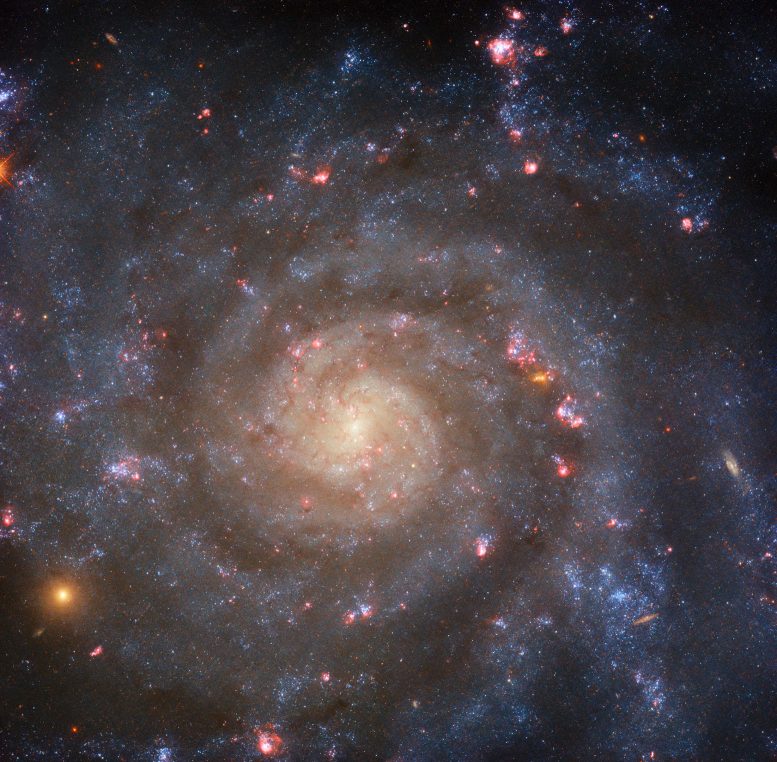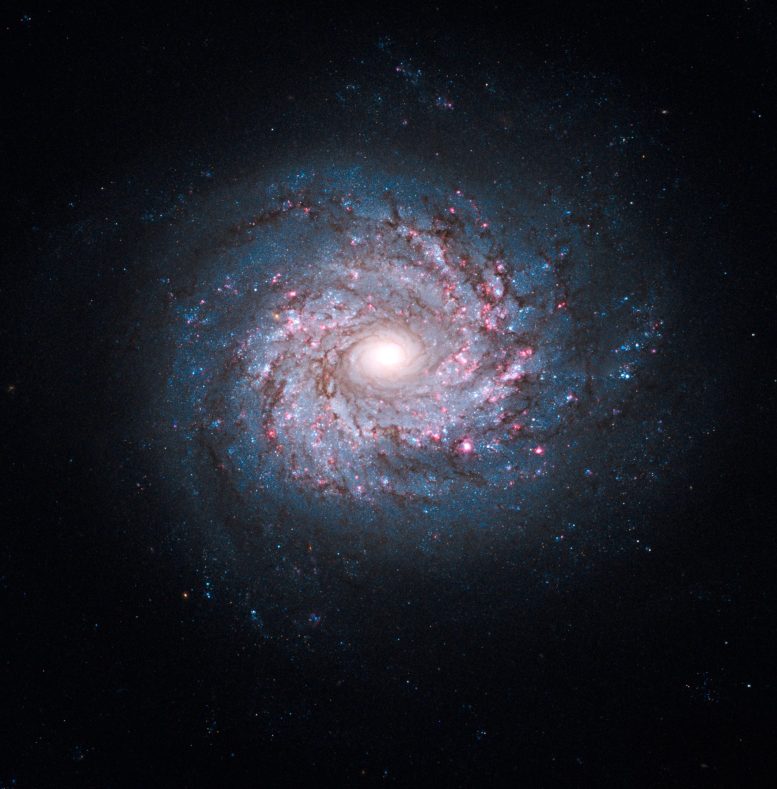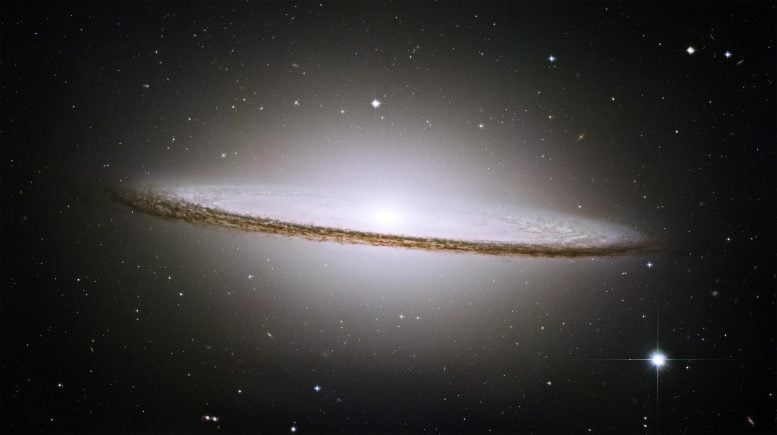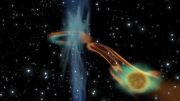
This stunning Hubble Space Telescope image features the spiral galaxy IC 5332. It is located 30 million light-years away in the constellation Sculptor and displays a face-on orientation to Earth. When a galaxy appears circular from our perspective, it’s termed ‘face-on’, while an oval appearance denotes an ‘edge-on’ orientation. Credit: ESA/Hubble & NASA, R. Chandar, J. Lee and the PHANGS-HST team
The face-on spiral galaxy IC 5332, in the constellation Sculptor, is an SABc-type with weakly barred features and loosely coiled arms.
This glittering Hubble Space Telescope image shows the spiral galaxy IC 5332, which is located approximately 30 million light-years away in the constellation Sculptor, and has an almost face-on orientation to Earth.
To explain what is meant by ‘face-on’, it is helpful to visualize a spiral galaxy as an (extremely) large disc. If the galaxy is oriented so that it appears circular and disc-shaped from our perspective here on Earth, then we can say that it is ‘face-on’. In contrast, if it is oriented so that it appears squashed and oval-shaped, then we would say that it is ‘edge-on’.

This face-on spiral galaxy, called NGC 3982, is striking for its rich tapestry of star birth, along with its winding arms. Credit:
NASA, ESA, and the Hubble Heritage Team (STScI/AURA)
The key thing is that the same galaxy would look extremely different from our perspective depending on whether it was face-on or edge-on as seen from Earth. Check out these previous Hubble Pictures of the Week for examples of another face-on spiral galaxy (pictured above) and an almost edge-on spiral galaxy (below).

NASA’s Hubble Space Telescope captured a stunning image of the universe’s elegant Sombrero galaxy, also known as Messier 104 (M104). This galaxy is distinguished by its bright white core surrounded by thick dust lanes that form its spiral shape. When viewed from Earth, we see the galaxy almost from its side, just six degrees north of its equatorial plane. Its unique appearance, reminiscent of a Mexican hat with a wide brim and tall top, is how it earned the name “Sombrero.” Credit: NASA and The Hubble Heritage Team (STScI/AURA)
IC 5332 is designated as an SABc-type galaxy in the De Vaucouleurs system of galaxy classification. The ‘S’ is straightforward, identifying it as a spiral galaxy, which it clearly is, given the well-defined arms of bright stars and darker dust that curl outwards from the galaxy’s dense and bright core. The ‘AB’ is a little more complex. It means that the galaxy is weakly barred, which refers to the shape of the galaxy’s center.
The majority of spiral galaxies do not spiral out from a single point, but rather from an elongated bar-type structure. SAB galaxies — which are also known as intermediate spiral galaxies — do not have a clear bar shape at their core, but also do not spiral out from a single point, instead falling somewhere in between. The lowercase ‘c’ describes how tightly wound the spiral arms are: ‘a’ would indicate very tightly wound, and ‘d’ very loosely wound. Thus, IC 5332 is quite an intermediate spiral galaxy on many fronts: weakly barred, with quite loosely wound arms, and almost completely face-on!









Be the first to comment on "From Face-On to Edge-On: The Spiral Story of a Stunning Galaxy"